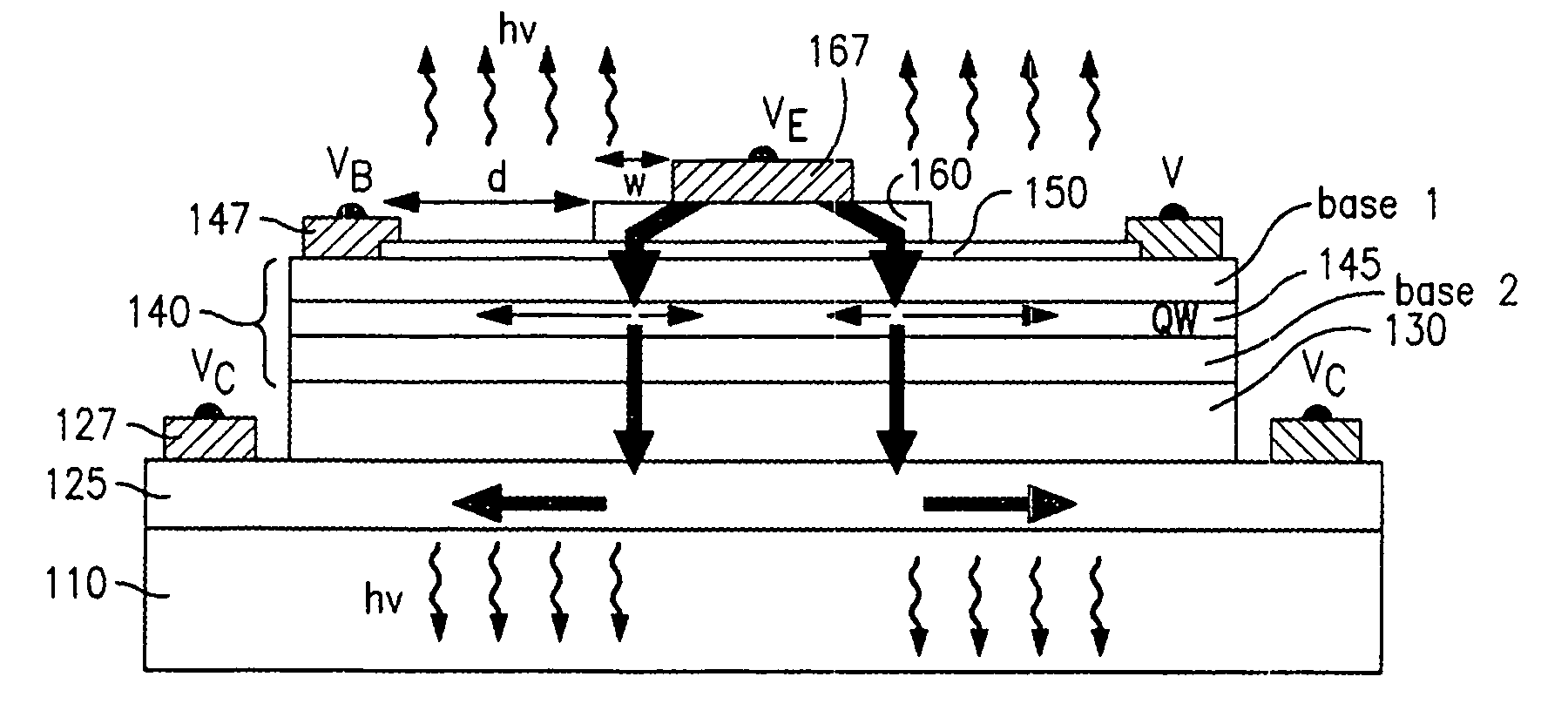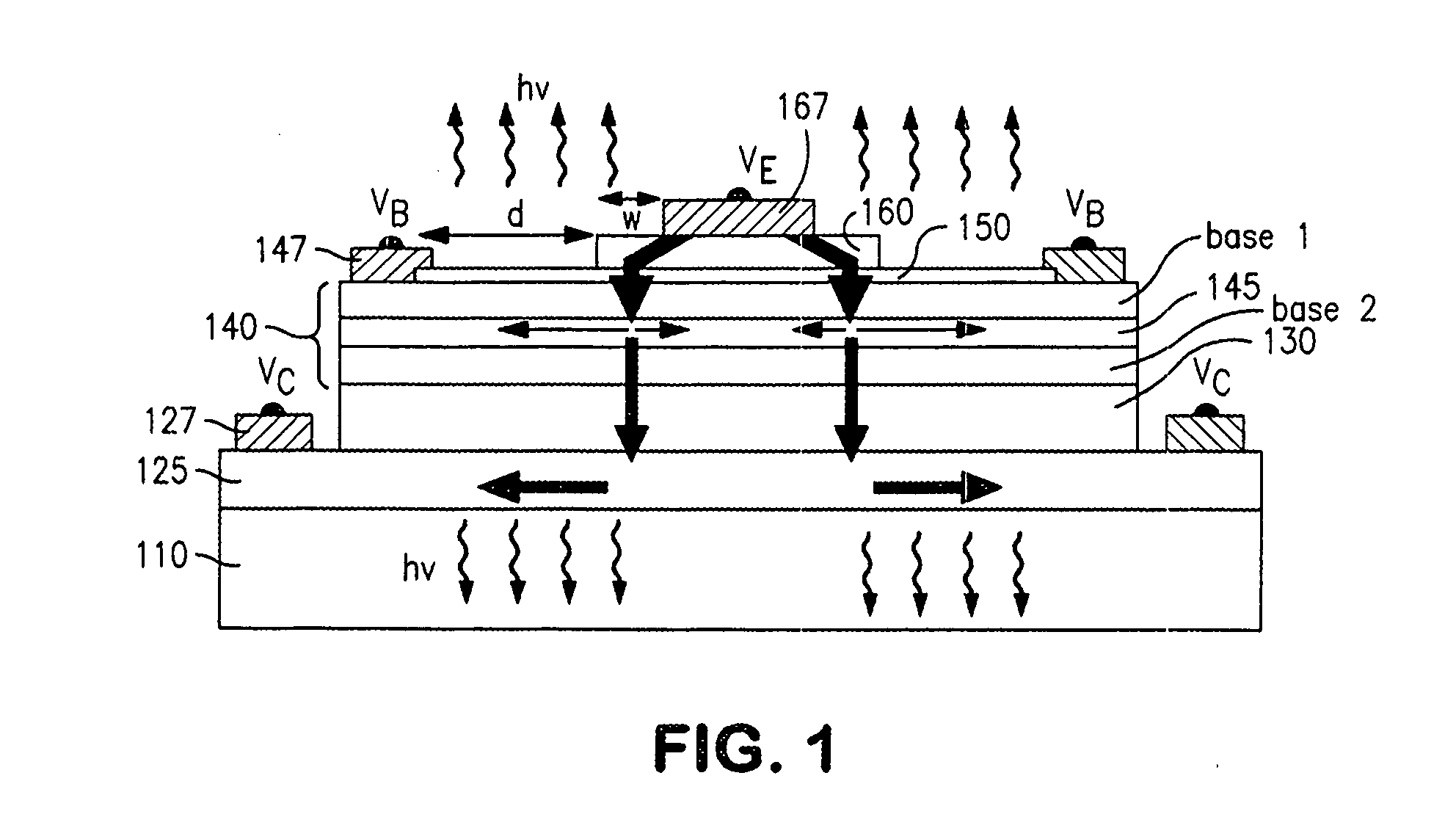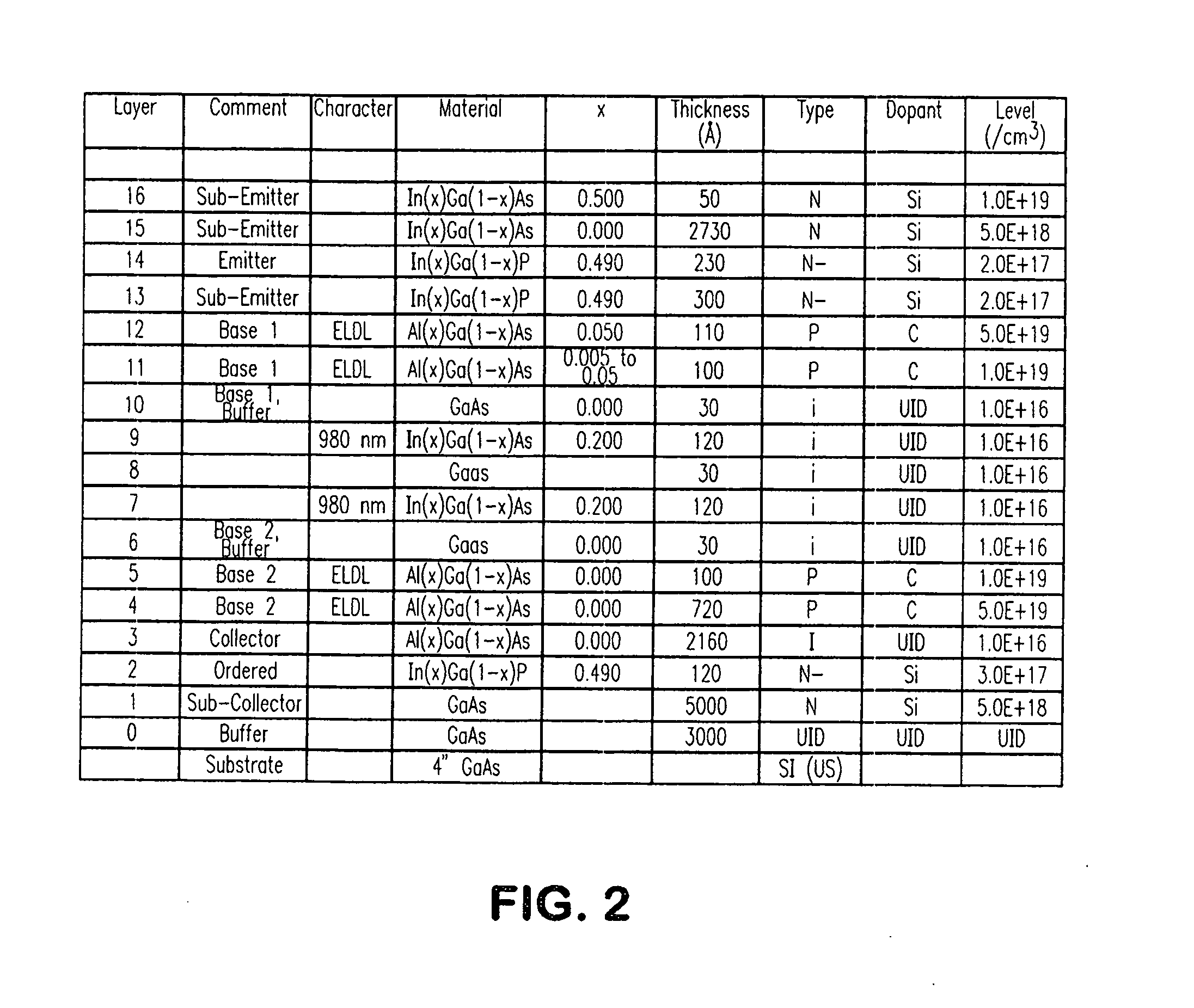High Speed Optical Tilted Charge Devices And Methods
a charge device and high-speed optical technology, applied in semiconductor devices, basic electric elements, electric devices, etc., can solve the problems of increasing the efficiency of radiative recombination, not achieving the objective, and increasing the current densities (reliability), so as to reduce the thermalization of captured electrons in qw, reduce non-radiative recombination, and reduce the lateral transport of electrons
- Summary
- Abstract
- Description
- Claims
- Application Information
AI Technical Summary
Benefits of technology
Problems solved by technology
Method used
Image
Examples
Embodiment Construction
[0030]Referring to FIG. 1, there is shown a cross-sectional view of an optical tilted charge device, in the form of a light-emitting transistor, in accordance with an embodiment of the invention and which can be used in practicing an embodiment of the method of the invention. In FIG. 1, a subcollector region 125 is disposed on an undoped substrate 110. A mesa on subcollector 125 includes a base region 140 disposed between a collector region 130 and an emitter region 160 formed on a further mesa. The base region includes one or more quantum wells 145 between an upper base region (base 1) and a lower base region (base 2). In this embodiment, a collector electrode 127 contracts a surface of subcollector region 125, a base electrode 147 contacts a surface of base region 140, and an emitter electrode 167 contacts a surface of emitter region 160. A tunnel barrier layer 150 is disposed over the top surface of the base region 140, between the base region and emitter region 160, covering, in...
PUM
 Login to View More
Login to View More Abstract
Description
Claims
Application Information
 Login to View More
Login to View More - R&D
- Intellectual Property
- Life Sciences
- Materials
- Tech Scout
- Unparalleled Data Quality
- Higher Quality Content
- 60% Fewer Hallucinations
Browse by: Latest US Patents, China's latest patents, Technical Efficacy Thesaurus, Application Domain, Technology Topic, Popular Technical Reports.
© 2025 PatSnap. All rights reserved.Legal|Privacy policy|Modern Slavery Act Transparency Statement|Sitemap|About US| Contact US: help@patsnap.com



